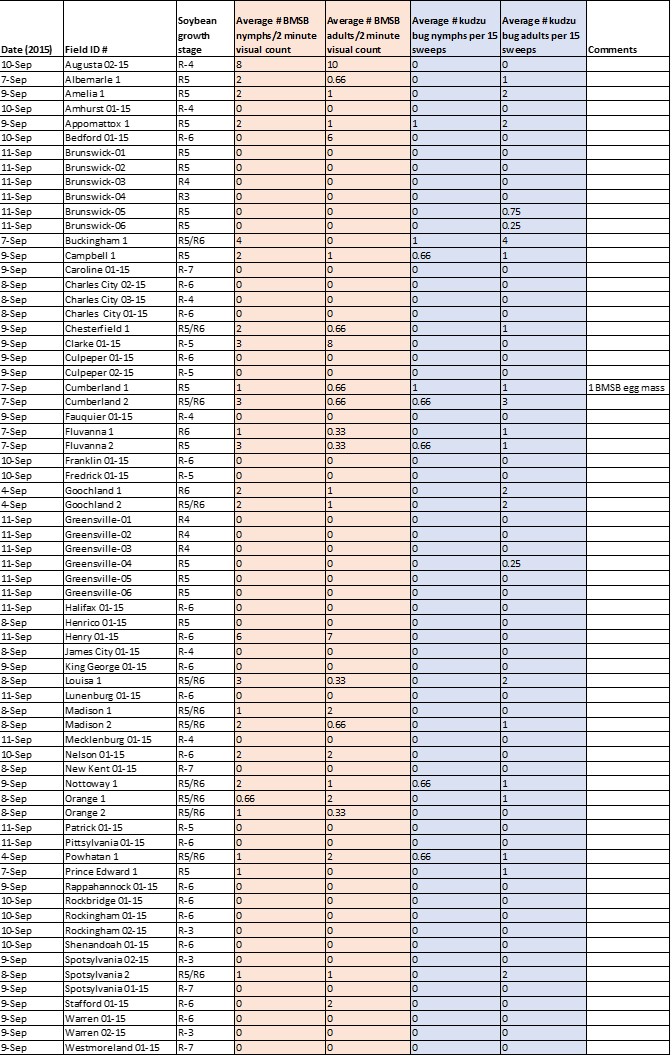Scouts Ed Seymore and Jamie Hogue have found multiple soybean fields in Virginia this week (early to mid-September) with threshold levels of brown marmorated stink bug (BMSB)–please refer to the figure for locations and numbers, noting that the columns for BMSB nymphs and BMSB adults need to be added together for calculating threshold numbers (more on that below). Of course this is just a small sample of the fields out there, but their reports stress the need to scout your fields, especially those fields at the late R4 growth stage (full pod, where pods are 3/4-inch [2-cm] long at one of the four uppermost nodes) and at R5 (beginning seed, where seed is 1/8-inch [3-mm] long in the pod at one of the four uppermost nodes on the main stem).
Due to their concentrations along field edges, BMSB should be sampled using 2-minute visual counts, 15-sweeps with a net, or beat cloth (wide rows only), by walking 10-20 feet into a field, taking several samples in different parts of the field edge, and determining the average. The thresholds for BMSB (adults + medium and large nymphs) in soybean, where BMSB is the predominant species, is 3-5 in a 2-minute visual count; 3-5 per 15 sweeps; or 0.5 per row foot using a beat cloth. If a threshold is met, an edge-only insecticide treatment with a labeled pyrethroid, carbamate, or organophosphate at the R5 soybean growth stage can provide high levels of control. As always, please be sure to read and follow the label.
Note that if your sampling finds a mix of stink bug species (e.g., BMSB, green, and brown) throughout the field, use thresholds of 5 per 15 sweeps or 1 per row foot (total all species, adults and nymphs).

